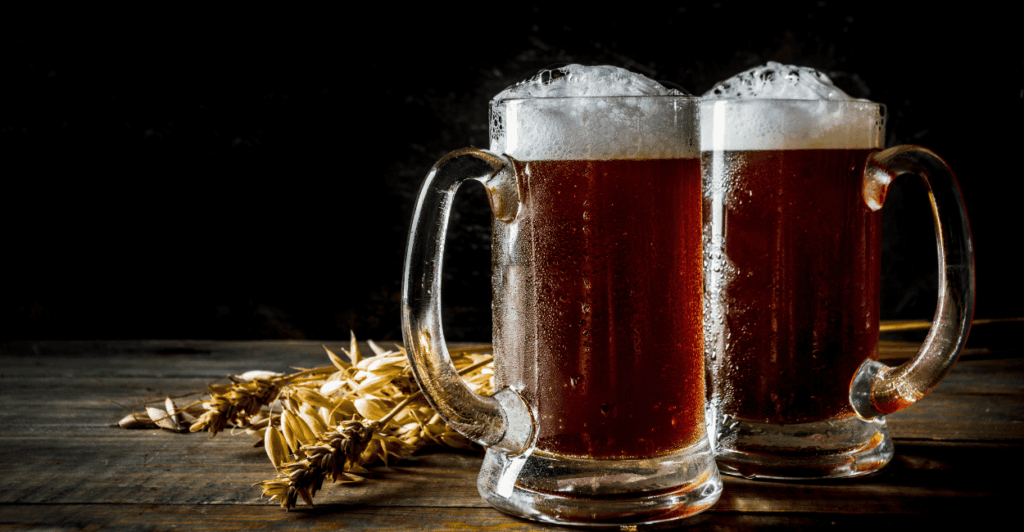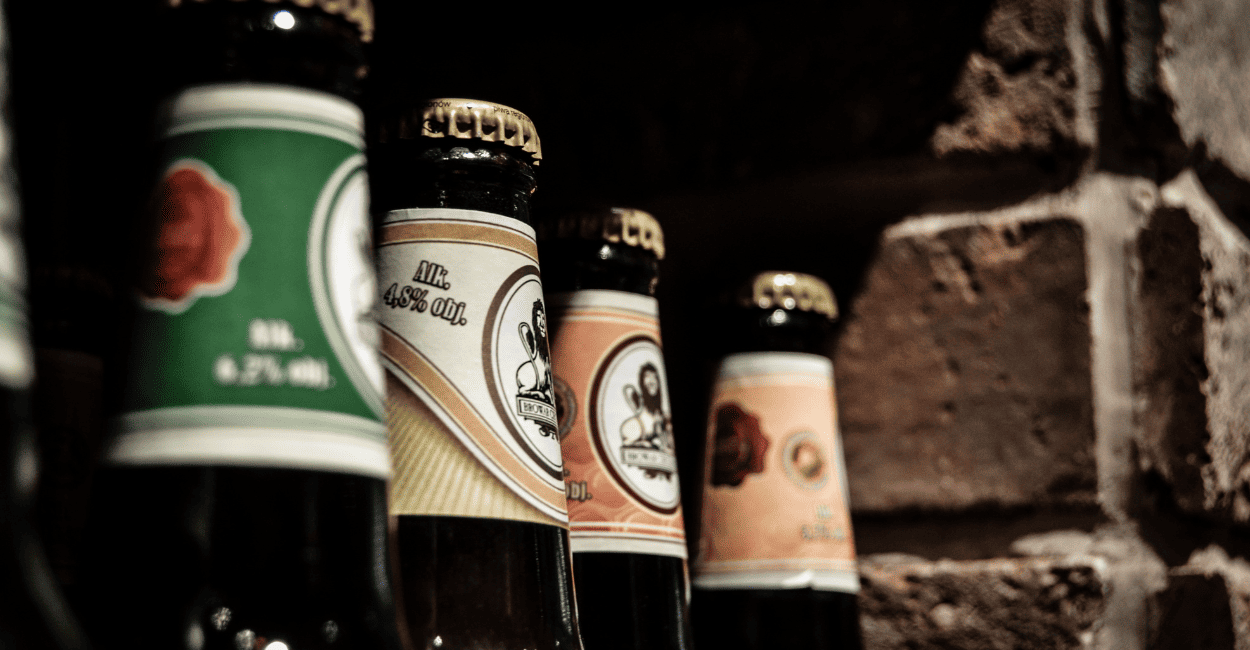How to Store Craft Beer Properly
Knowing how to store craft beer is essential to preserve the flavor, aroma, and quality of this special beverage. Storing it correctly prevents oxidation, spoilage, and loss of sensory characteristics. In this guide, you’ll discover the best practices for keeping your craft beer at home, including if you want to age it.
With simple precautions, like controlling temperature, light, and bottle position, it’s possible to keep your beer fresh and flavorful for much longer. Let’s get into the details.
How to Store Craft Beer at Home?
Storing craft beer properly at home requires attention to three main factors: temperature, light, and bottle position. These precautions help preserve the integrity of the beverage, preventing early oxidation and flavor alteration.
Understand the Influence of Temperature on Preservation
High temperatures accelerate chemical reactions, causing loss of freshness, off-flavors, and even microbial growth. Ideally, store between 5°C and 15°C for most styles.
Be Careful with Light Exposure
Light, especially UV rays, reacts with hop compounds and causes the “lightstruck” effect, giving beer a sulfur-like or cardboard aroma. Choose dark places or use amber bottles, cans, or thermal boxes.
The Importance of Bottle Position
Bottles should be stored upright. This minimizes contact with the cap and avoids oxidation. It also helps sediment settle at the bottom, making it easier to serve clear beer.
Which Beer Styles Need More Attention?
Hop-forward styles like IPAs, and light beers like Pilsners and Witbiers, are more sensitive. They should be consumed quickly and stored more carefully.
How Long Does Stored Craft Beer Last?
The shelf life of craft beer varies depending on style, alcohol content, and storage conditions. Some expire in 3 months, others can last for years.
Average Shelf Life by Type of Craft Beer
- American IPA: 3 months
- Lager and Pilsner: 6 months
- Barley Wine, Imperial Stout: 2 to 10 years
- Belgian Tripel: up to 2 years
- Lambic: 1 to 3 years
Difference Between Beers for Quick Consumption and Aging
Light, low-alcohol beers should be consumed fresh. Aging beers have high alcohol content and malt-forward profiles that improve over time, like Stouts and Barley Wines.
What Does the Manufacturer Say About Expiry Dates?
The printed expiration date considers optimal freshness. But with proper storage, some styles can last beyond the suggested date. Use your senses to judge.
What Are the Best Environmental Conditions for Storing Craft Beer?
Cool, dark environments with stable temperatures and moderate humidity are best. Avoid places with temperature swings or direct sunlight.
Ideal Storage Temperature
The ideal temperature ranges from 5°C to 12°C. Light beers do well around 4°C, while stronger, boozier styles benefit from 12°C storage.
Humidity and Ventilation of the Storage Area
Keep humidity between 50% and 70% to avoid mold on caps and corks drying out. The area should be ventilated but not drafty
Can You Store Beer in the Fridge?
Yes, as long as the temperature is stable and bottles aren’t kept in the door (due to frequent changes). It’s a great option for fresher styles.
Risks of Oxidation
Oxygen exposure is a major cause of beer spoilage. Avoid frequent fridge openings.
Watch Out for Temperature Fluctuations
Sudden changes accelerate aging and can ruin carbonation. Avoid places that heat up during the day.
How to Store Craft Beer for Aging?
Aging beer is suitable for specific styles and requires controlled environments and proper bottle choice.
Beers That Improve Over Time
Barley Wines, Imperial Stouts, Belgian Dark Strong Ales, and Quadrupels are great examples. They develop complex flavors and aromas over time.
Corked Bottles vs. Metal Caps
Corks allow micro-oxygenation, which helps aging. Metal caps must be high-quality to avoid contamination.
Dark Environments with Controlled Temperature
Ideally, store between 10°C and 13°C, without light, and with moderate humidity. Wine cellars or beer fridges work well.
How to Tell if Craft Beer Has Gone Bad?

Yes, beer goes bad if poorly stored. But there are visual, aromatic, and taste signs that show spoilage.
Visual and Sensory Signs of Spoilage
Color changes, unusual cloudiness, strange bubbles, vinegar smell, or cardboard taste suggest oxidation or contamination.
What to Do If the Beer Tastes Strange?
Throw it out. Even if within date, it might have spoiled due to light, heat, or microbial issues. Don’t risk it.
Practical Tips for Storing Craft Beer
- Avoid direct sunlight
- Use dark cabinets or thermal boxes
- Always store bottles upright
- Choose places with stable temperatures
- Move to the fridge the day before consumption
Avoid Spots with Direct Sunlight
UV light is one of beer’s biggest enemies. Use boxes, cabinets, or dark places.
Use Cabinets or Thermal Boxes
Affordable and effective ways to protect against heat and light, especially if you don’t have a beer fridge.
Store Upright or Lying Down?
Always upright to reduce cap contact and let yeast settle.
When to Transfer to the Fridge
The day before drinking, to stabilize temperature and ensure freshness.
Best Places to Store Craft Beer at Home
Fridge
Great for quick consumption, especially lighter styles. Avoid the fridge door or freezer.
Wine or Beer Fridge
Ideal for controlled aging or long-term storage.
Indoor Cabinets or Storage Boxes
Simple solutions to keep beer out of light and temperature swings
How to Store Craft Beer: Conclusion and Best Practices
Knowing how to store craft beer is a must for any enthusiast. Temperature, light, and bottle position make all the difference.
By applying best practices, you prevent your beer from spoiling and ensure a much richer tasting experience. Enjoy your beer to the fullest!
Frequently Asked Questions About Storing Craft Beer
Does Craft Beer Expire Faster Than Industrial Beer?
- Yes. Without preservatives, craft beer has a shorter shelf life and requires better storage.
Can I Store Opened Craft Beer in the Fridge?
- Only for a few hours. Once opened, consume it soon to avoid oxidation.
Do I Need to Rotate Bottles While Storing?
- No. Keep them upright and avoid shaking to prevent disturbing sediment.
How Long Does Unopened Craft Beer Last?
- From 3 months to 2 years, depending on the style, alcohol content, and storage.









